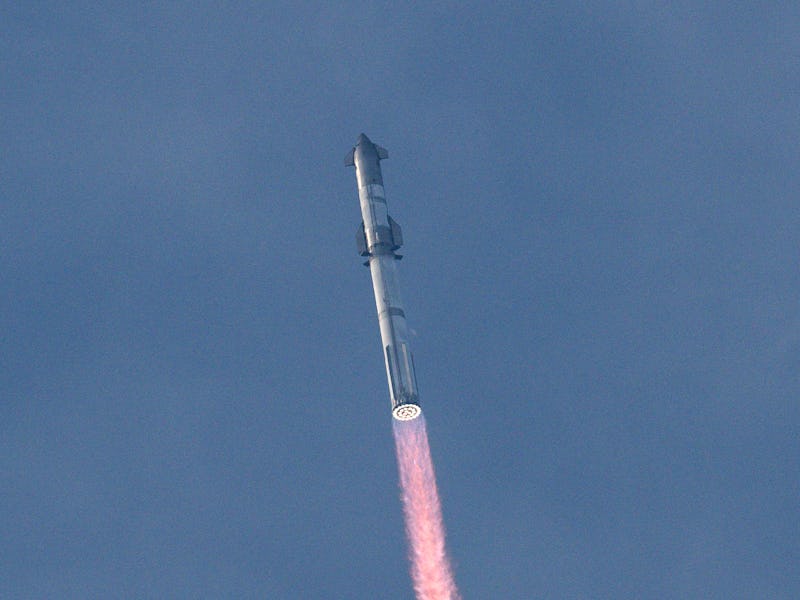
The largest and most powerful rocket ever built has made it to orbit without exploding.
SpaceX launched its Starship rocket for the third time on Thursday morning, and this time everything went according to plan. The enormous rocket's first two flight tests both ended in what SpaceX euphemistically calls "rapid unscheduled disassemblies," but this time, Starship made it to space, parted ways with Falcon Heavy, and nudged itself into orbit. Starship and its Falcon Heavy booster blasted off from the SpaceX launch facility near Boca Chica, Texas at 9:25 ET.
Mission controllers lost contact with Starship during its re-entry over the Indian Ocean, shortly after data showed that the spacecraft had reached very high temperatures on its way through the atmosphere.
Starship blasted off from SpaceX’s Starbase launch facility in Boca Chica, Texas on Thursday morning.
By The Numbers
Today's flight was the third integrated test of the Super Heavy booster and the Starship spacecraft.
Altogether, Starship and Super Heavy shove themselves away from Earth with 16.7 million pounds of thrust, almost twice that of NASA's Space Launch System (which blasted off with so much force during the Artemis I launch that it damaged the launch pad). That thrust comes from Super Heavy's 33 Raptor engines and Starship's 6 Raptor engines, which burn a combination of methane and liquid oxygen. It takes 10 million pounds of propellant just to get Starship into orbit.
Starship, in theory, can carry up to 100 people or 150 tons of payload into space, but it's still a long way from ready for either task.
What's Next?
SpaceX has lofty plans for Starship and Super Heavy. NASA has awarded the company a multibillion-dollar contract to take Artemis Crews to the Moon with Super Heavy, and SpaceX hopes Starship will eventually fly the first humans to Mars. Both Starship and Super Heavy are designed to be re-used (Super Heavy missed its landing and came down in the ocean instead, but SpaceX has demonstrated that it can land a rocket booster successfully). In the long run, SpaceX claims Starship will be able to launch three times a day (an exponentially higher operational tempo than NASA’s Space Shuttle in its heyday).
But so far the spacecraft and its giant rocket are well behind their original schedule; in late 2021, Elon Musk projected that Starship would launch a dozen times in 2022. Instead, it blew up twice in 2023 and has now finally launched successfully in 2024.
The goals for this third test flight of the SpaceX rocket were simple but crucial: reach orbit and make a single 90-minute lap around the planet, while opening and closing the payload door and testing a fuel transfer process for NASA. Starship accomplished those goals but appears to have been lost during its fiery re-entry to Earth’s atmosphere; it’s likely that the extreme heat and friction of the spacecraft’s passage through the air destroyed it.
Hundreds more flights — and probably a few more explosions — will need to happen before the world's largest rocket is ready to carry people.